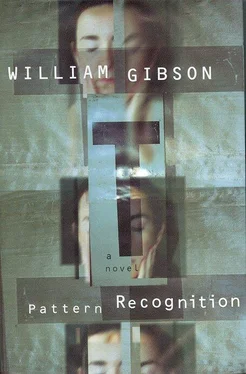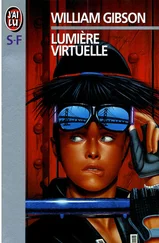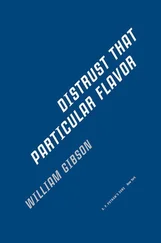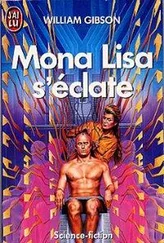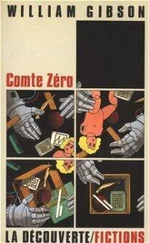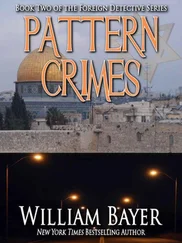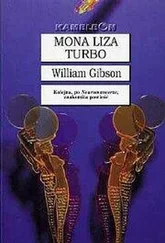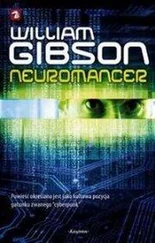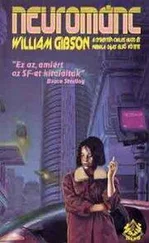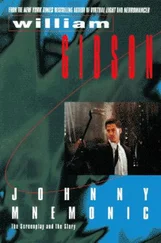In the bathroom mirror, clinically illuminated, her forehead looks only lightly bruised. The remains of the fabulous fanny job, she thinks, have come to resemble the first attempts of a trainee mortician. She unwraps a bar of soap, reminds herself not to use the hotel's shampoo, which will have the wrong pH for gaijin hair, remembers to carefully copy Taki's number from her palm onto a Park Hyatt notepad, and shuts herself in the glass-walled shower, which is approximately the size of Boone's girlfriend's kitchen in Hongo.
Feeling much cleaner, if no less exhausted, she wraps herself in a terry robe and checks the room-service menu, deciding on a small pizza and a side of mashed potatoes. Non-Japanese comfort food.
The pizza turns out to be very good, though very Japanese, but the potatoes are amazing, a Rickson's-like super-simulacrum of a Western classic. She's also ordered two bottles of Bikkle, opening her second as she finishes the potatoes.
She needs to check her e-mail. She needs to phone Pamela Mainwaring about getting out of here as soon as possible. And really she should phone Parkaboy.
She slugs back her Bikkle and plugs her iBook into the room's dataport.
One e-mail. As it pops up in her in-box she sees that it's from Parkaboy.
Wondrous Strange
She opens it. There is an attachment titled WS.jpg.
No rest for the wicked. After e-mailing us, or rather Keiko, from two separate cafes, as soon as Taki got home he sent the attached.
She clicks on the jpeg.
A map. A broken T scribed with city streets and strings of numbers. It reminds her of a steak's T-bone, the upright tapering raggedly, the left cross-arm truncated. Within its outline are avenues, squares, circles, a long rectangle suggesting a park. The background is pale blue, the T-bone gray, the lines black, the numbers red.
If Taki was in love before, he is now in lust. Or maybe the other way around. But in his new frenzy of adoration and desire to please, he has sent this, which he explains to Keiko is the latest from Mystic. Darryl, who has otaku DNA himself, is convinced that Taki is not a member of this Mystic, but a peripheral character of some kind — possibly, since he designs games for a Japanese phone system, one of their sources of information. Darryl says that the highest level of play, for technoobsessives, is always and purely about information itself, and he thinks that Mystic may have battened on the footage not in a footagehead way but simply for the sake of solving a puzzle that no one else has solved. He posits a cell of professional info-theorists, of some kind, who are also, in this ultimate otaku sense, info-junkies. Perhaps employed in the R&D arm of one or more large corporations. Perhaps they need something that Taki knows. It doesn't matter, really, since Taki seems somehow to have reversed the flow of data, and the psychosexual cruise missile that is Judy, tweaked, has found its mark. To save you the trouble of counting them, there are one hundred and thirty-five numbers, here, each number consisting of three groups of four digits.
Her scalp prickles. She gets up, goes into the bathroom, returns with the notepad.
8304 6805 2235
She puts the pad beside her iBook and peers into the red cloud cover of numbers partially masking the T-city.
There it is. The streets directly beneath it are small and twisted, down toward the bottom of the peninsula that forms the T's upright. Although, she reminds herself, she has no reason to believe this the representation of any island, actual or imaginary. It might be a T-shaped segment extracted from some larger map. Though the streets, if they are streets, align with its borders…
Remember the whiteout, when they kiss? As though something explodes, overhead? If you've been following F:F:F you'll know that that set off major Blitz reverb in our British posters. Various proofs that our story is set in London in the 40s, none ultimately convincing. But that whiteout. Blank screen. Taki says that “Mystic” decrypted this graphic from that whiteness. As to how blankness can yield image, I do not pretend to know, though I suppose that is the question, ultimately, that underlies the entire history of art. Nonetheless, where are we, with this thing? If each segment is watermarked with one of these numbers, then the action in each segment seems to be mapped here, and we have, for the first time, a geography of sorts, and possibly, if we knew the numbers for each segment, a formal order. (I've entered them all in a database and don't see that they are sequential. Suspect random generation and/or random assignment.) Darryl is looking into a graphics bot that only searches maps. Meanwhile, exhausted, baffled, but unhealthily excited, I remain, Parkaboy.
She stares at the T-bone city. She phones Pamela Mainwaring.
Her watch wakes her, chirping mercilessly. She sits up in the huge bed, uncertain where she is.
Six in the morning. Pamela Mainwaring has her on a flight out of Narita just after noon.
She makes sure the red light is on, on the oversized kettle-analog, wraps herself in last night's white robe, goes to the window, powers open the drapes, and dimly discovers Tokyo at the bottom of an aquarium of rainy light. Gust-driven moisture shotguns the glass. The lavish lichen of the wooded palace grounds tosses darkly.
Her cell rings. She goes back to the bed, roots through the covers, finding it.
“Hello?”
“Boone. How's your head?”
“Tired. I called Pamela…”
“I know. So did I. I'll meet you in the lobby at eight-thirty. JR reservations for both of us.”
Something about a lack of autonomy here that bothers her.
“See you,” he says.
The water reaching boil as she's rummaging through the snacks atop the minibar, looking for a shrink-wrapped filter-coffee unit.
THE hotel's fitness center, a room so large that it seems designed primarily to illustrate interior perspective, has its own Pilates reformer, a faux-classical Japanese interpretation in black-lacquered wood, upholstered with something that looks like sharkskin. She's able to get in her workout, then shower and wash her hair, pack, and make the lobby by eight-thirty.
Boone arrives minutes later, in his black horsehide coat, carrying his small leather suitcase and one of those Filson outfitter bags that look like L.L. Bean on steroids.
She picks up her own black generic Korean nylon and they walk out, past the bamboo grove and into the elevator.
SHE wakes to the offer of a hot washcloth. For an instant believes she's still on her way to Tokyo, and that it's all been a dream.
This is terrifying, and she hurts her neck, so quickly does she crane around, to find that Boone Chu is in fact in the nearest seat-nest, in full recline and apparently asleep, looking as strangely canceled as anyone does when wearing a black blindfold.
They hadn't had much to say to each other, on the train to Narita. She'd slept in the lounge, after security measures including a sort of CAT scan for their shoes and answering questions in front of an infrared device that registered minute changes in the temperature of the skin around the eyes, the theory being that lying about having packed one's own bag induced a sort of invisible and inevitable micro-blush. Though the Japanese also believe that personality is determined by blood type, or had when she was last here. Boone had been impressed, though, and had told her to expect the blush machines soon in America.
She'd told him, as they were boarding, that she'd gotten something more from Taki, via Parkaboy, but that she was too tired to explain it, that she'd show it to him when she'd had more sleep.
What is that about, she wonders, that holding back? Something to do with the newness of their working relationship, but also, she knows, something to do with something she'd felt in that apartment. She doesn't want to look at that too closely. But also she wants time to get her head around this idea of the T-bone city. And there's a way in which she simply finds him pushy.
Читать дальше
